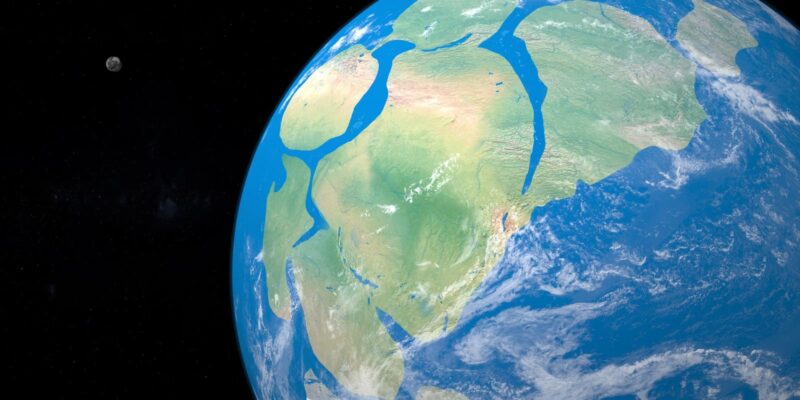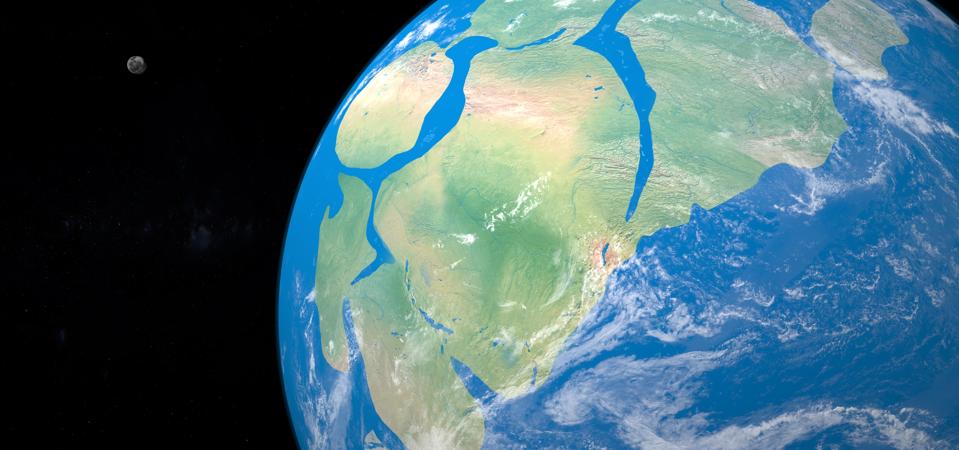Hidden in Japan’s bubbling hot springs, scientists may have found living echoes of Earth’s earliest organisms: survivors from a world without oxygen.
getty
We’ve pieced together a remarkably detailed timeline of life on Earth over the last century. Ultimately, we’ve divided it into four major eons: the Hadean, Archean, Proterozoic and today’s Phanerozoic. Each of these represent a monumental shift in the Earth as a whole: the physical surface of the planet, the atmosphere as well as the very nature of life itself.
However, new research published in Microbes and Environments challenges many of the long-standing assumptions we’ve maintained about what early life on Earth actually looked like. To understand just how fascinating these findings are, we need to go back in time — by around 3.5 billion years.
Origins Of Life On Earth
It’s hard to imagine Earth as anything except blue and green. We know it today as a home to forests, coral reefs, mountain ranges, deserts and the millions of species that inhabit them. Yet, for a vast majority of our planet’s history, none of these things existed.
Around 4.5 billion years ago, during the Hadean eon, Earth was, quite literally, hellish. Its name derives from “Hades,” the Greek god of the underworld, which was a rather apt description for a planet that was molten, unstable and under constant bombardment from asteroids. The surface of the Earth then was magma, and the atmosphere was made up solely of toxic gases. Most notably, water, as we know it today, could not yet exist in liquid form.
But as a 2020 study from Science Advances explains, Earth eventually cooled down. Volcanic outgassing gave rise to an atmosphere that was rich in carbon dioxide. It was at this point in the Earth’s history that water vapor started condensing, meaning that the first oceans were able to form.
This marked the dawn of what we call the Archean eon, which spanned from around 4.0 to 2.5 billion years ago.
It was in these Archean oceans that life (as far as we can tell) first appeared. The earliest known life forms were prokaryotes: single-celled organisms that lacked nuclei, much like modern bacteria. They flourished in shallow seas, hydrothermal vents and mineral-rich environments. These microbes were tough, resourceful and capable of surviving in conditions that would kill a vast majority of lifeforms today.
There was one enormous difference between Earth then and Earth now: oxygen. Or, rather, the lack of it.
A World Without (And Then Suddenly With) Oxygen
There was roughly a million times less oxygen in the Earth’s atmosphere during the Archean than there is today. This made oxygen totally unnecessary to many lifeforms during that period, if not poisonous altogether. Life, instead, thrived off of chemistry that had nothing to do with the air we breathe today.
However, this changed entirely, about 2.4 billion years ago, during the Paleoproterozoic era. This marked a shift known as the Great Oxygenation Event (GOE) that transformed the planet as we know it forever, as explained in Biological Innovations that Built the World.
Cyanobacteria, a photosynthetic microbe that uses sunlight to produce energy, better known today as blue-green algae, started to release oxygen as a byproduct. This bacteria’s photosynthesis slowly saturated the oceans over millions and millions of years; it oxidized iron and minerals, which turned the seas a rusty red color.
Eventually, this newfound abundance of oxygen started to leak into the Earth’s atmosphere. This led to what was arguably one of the most consequential mass extinctions in history: the death of countless anaerobic organisms that had no idea how to tolerate this new, reactive gas.
But, for all the destruction it caused, the GOE also paved the way for almost every other lifeform that came after. It gave rise to an atmosphere that could accommodate more complex, multicellular life — and ultimately, for organisms like us.
Adapting To Oxygenation
A question that has plagued scientists for as long as we’ve understood the GOE is: how did microbes make the leap from a world with almost no oxygen whatsoever, to one that is completely saturated with it?
To answer this, the researchers behind the 2025 Microbes and Environments study turned to a modern, earthly analog: the hot springs of Japan. Known locally as onsen, these mineral-rich springs are the closest things we have to a time-machine.
They have remarkably unique water chemistries, as some are especially those rich in ferrous iron (Fe²⁺). These iron-rich springs, in particular, are exceptionally rare in our present-day, oxygenated world because ferrous iron oxidizes almost instantly into ferric iron (Fe³⁺) when it’s exposed to even a small amount oxygen.
However, in certain springs, the water has managed to maintain a high level of Fe²⁺, low oxygen concentrations and a near-neutral pH. These are conditions that very closely resemble those of Earth’s ancient Neoarchean to Paleoproterozoic oceans.
As such, the researchers hoped to get a glimpse, when looking into these Japanese springs, into how some of Earth’s early ecosystems functioned during the transition to an oxygenated planet. What they found was nothing short of remarkable.
In four of the five hot springs that were analyzed, the researchers observed microbial communities that were dominated by microaerophilic iron-oxidizing bacteria. Put simply, these are organisms that were found to thrive in low-oxygen environments, and to use the water’s ferrous iron as their main energy source — which they converted into ferric iron.
In other words, we now have insight into how early microbes might have gained energy billions of years ago.
Cyanobacteria (the aforementioned oxygen-producing pioneers of the GOE) were also present, only in much smaller numbers. And by means of metagenomic sequencing, the team were able to reconstruct more than 200 high-quality microbial genomes. This allowed them to map out the metabolic capabilities of the spring’s inhabitants, and in stunning detail, too.
The results painted a picture of a delicately balanced ecosystem, where different microbial species live and cooperate in order to maintain stability in an environment that’s both oxygen-poor and chemically dynamic. The iron-oxidizing microbes, for instance, coupled iron and oxygen metabolism in ways that allowed them to detoxify harmful compounds.
And, in doing so, they created their own pockets within the spring in which oxygen-sensitive anaerobes could live on.
These microbes were, in other words, essentially engineering their own microhabitats. They crafted local environments that made it possible for multiple life forms, that we previously thought were incompatible, to coexist.
What These Findings Mean
If microbial communities in modern hot springs can create self-sustaining, interdependent ecosystems under some of the most extreme and oxygen-limited conditions we know of today, then that might mean that early Earth’s biosphere could’ve been significantly more diverse and dynamic than we used to think.
Earth may have hosted far more metabolically flexible organisms than, as we previously thought, just a handful of primitive bacteria that were battling to survive. It may not sound like it, but this is a finding that may have implications beyond our own planet.
When we search for life elsewhere — whether on Mars, Europa or exoplanets orbiting faraway stars — the first biosignature we usually look for is oxygen. However, as this study reminds us, life may not necessarily need oxygen to thrive. It could actually flourish best without it at all.
Worlds with iron-rich oceans, volcanic activity and minimal oxygen are what we once would’ve considered inhospitable. But, in reality, there’s a chance they could actually be teeming with microbial life.
Does the thought of a planet covered by a blood-red ocean frighten you more than it intrigues you? Take this science-backed test to find out if you have “thalassophobia:” Thalassophobia Test









